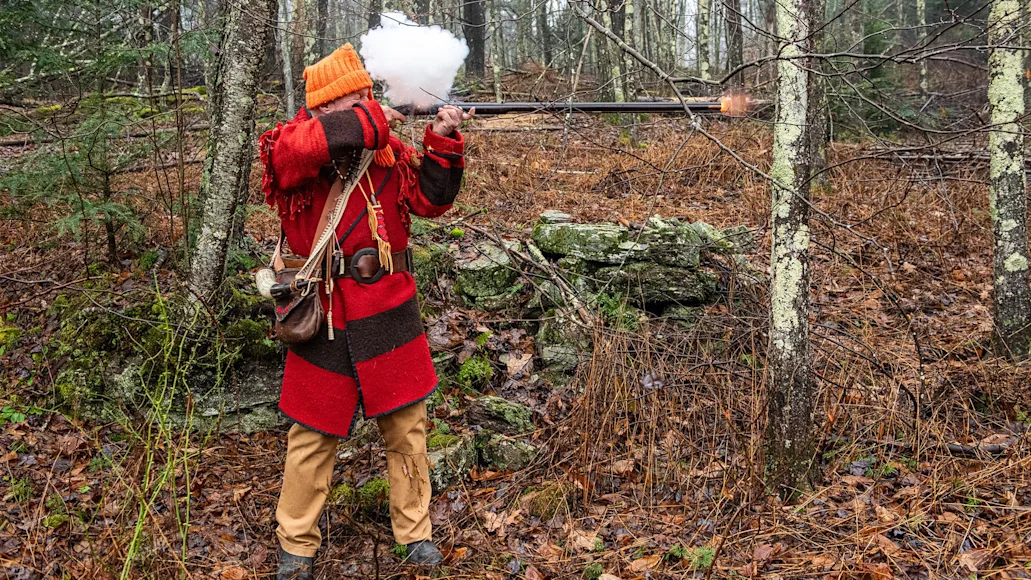Pennsylvania’s flintlock-only deer season, begun in 1973, is the last of its kind in America. While most of today’s hunters tote modern in-line muzzleloaders, each January, Keystone State traditionalists forgo the smokepole’s biggest technological advances of the past 200 years—from the percussion cap to the FireStick—and step into the woods with gear befitting a primitive season: flint, steel, powder, patch, and ball. In this way, they keep the past alive.
Sure, you’ll see Sitka jackets and camo-dipped guns during the P.A. flintlock season, but it’s the old-school hunters in buckskins and fur hats, carrying traditional long rifles, who make this one-of-a-kind hunt what it is. A few years ago, photographer Randy Harris and I tagged along with a couple of these men.
One is Dave Ehrig, aka “Mr. Black Powder,” authority on all things muzzleloader and author of Black Powder Whitetails, The Art of Building a Pennsylvania Longrifle, and Muzzleloading for Deer and Turkey. Ehrig lives in Alburtis, PA, and insists that flintlock rifles are the most demanding, historic, and fun kind of firearm there is. The other man is Bill Slusser, a Kentucky-based gunsmith who makes some of the country’s most impressive and ornate custom flintlock rifles. He often devotes thousands of hours to the creation of a single gun, each one built by hand to buyer’s exact measurements and likely to include whatever one’s budget allows in the way of gold, silver, and brass inlays.
Although we didn’t tag a deer on our hunt, the opportunity to spend time with these two men, to listen to them talk about the history of muzzleloader hunting, and to see and photograph their traditional garb and gear was both fascinating and a bulletproof argument against anyone who thinks modern muzzleloaders should be allowed in every deer season. Because if they were, what’s below could be lost forever.
Learn how to upgrade your membership plan and get the new print magazine!
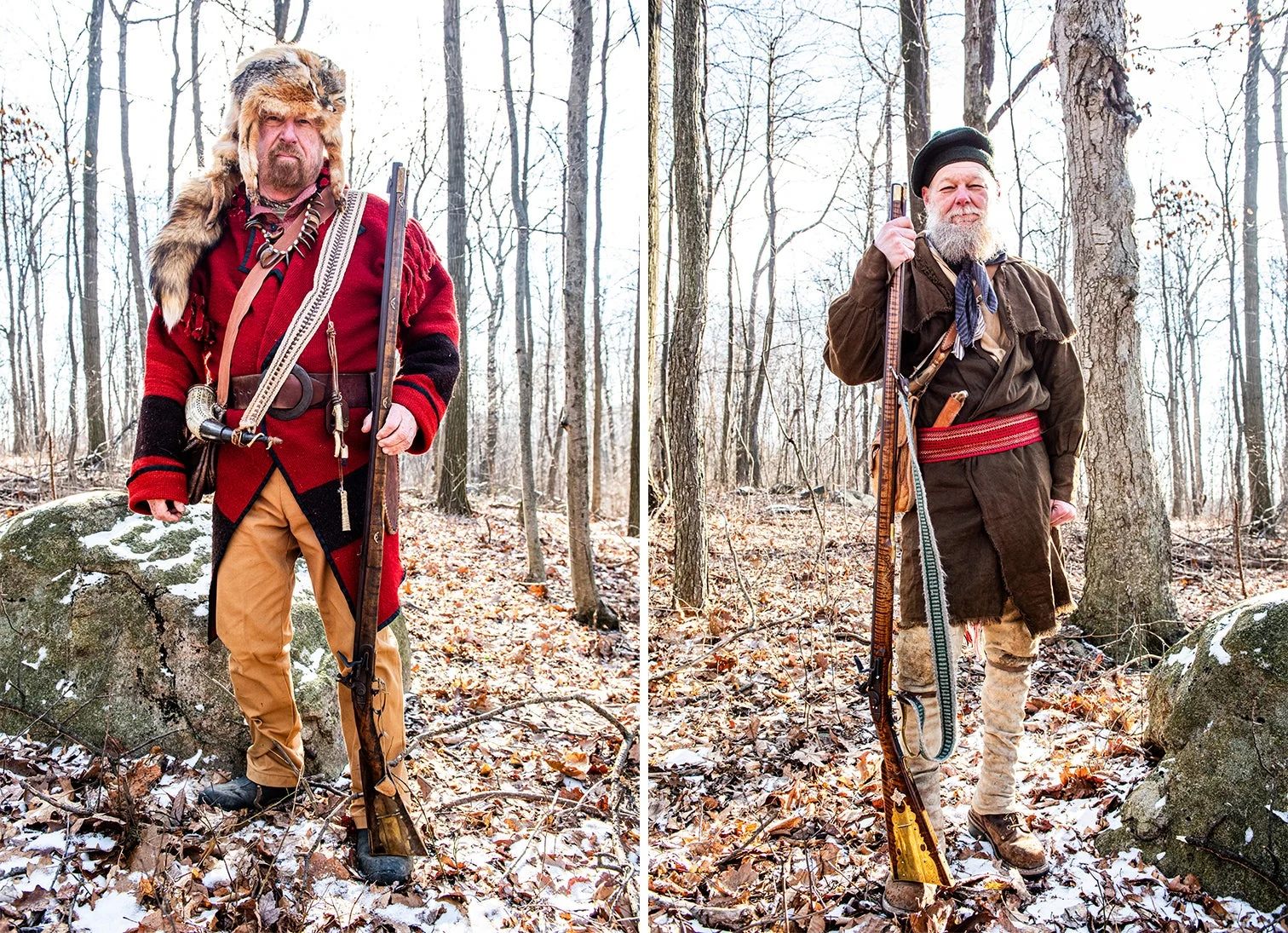
Dave Ehrig (left) and Bill Slusser (right). Ehrig’s coat was dyed by his wife, Tina, using cochineal insects. When mixed with insoluble aluminum and calcium salts, the insects’ bodies yield a red dye known as carmine, which was widely used in the Colonial period. Slusser wears buckskin leggings, a rifleman’s shirt of muslin, and a hat that would identify the wearer as an artisan, in his case, a gunsmith. “I’ve hunted in this stuff for 40 years,” Slusser says. “And I’ll tell you what, those early flintlock hunters were tough. It’s alright if you’re moving, but you get cold quick if you stop.”
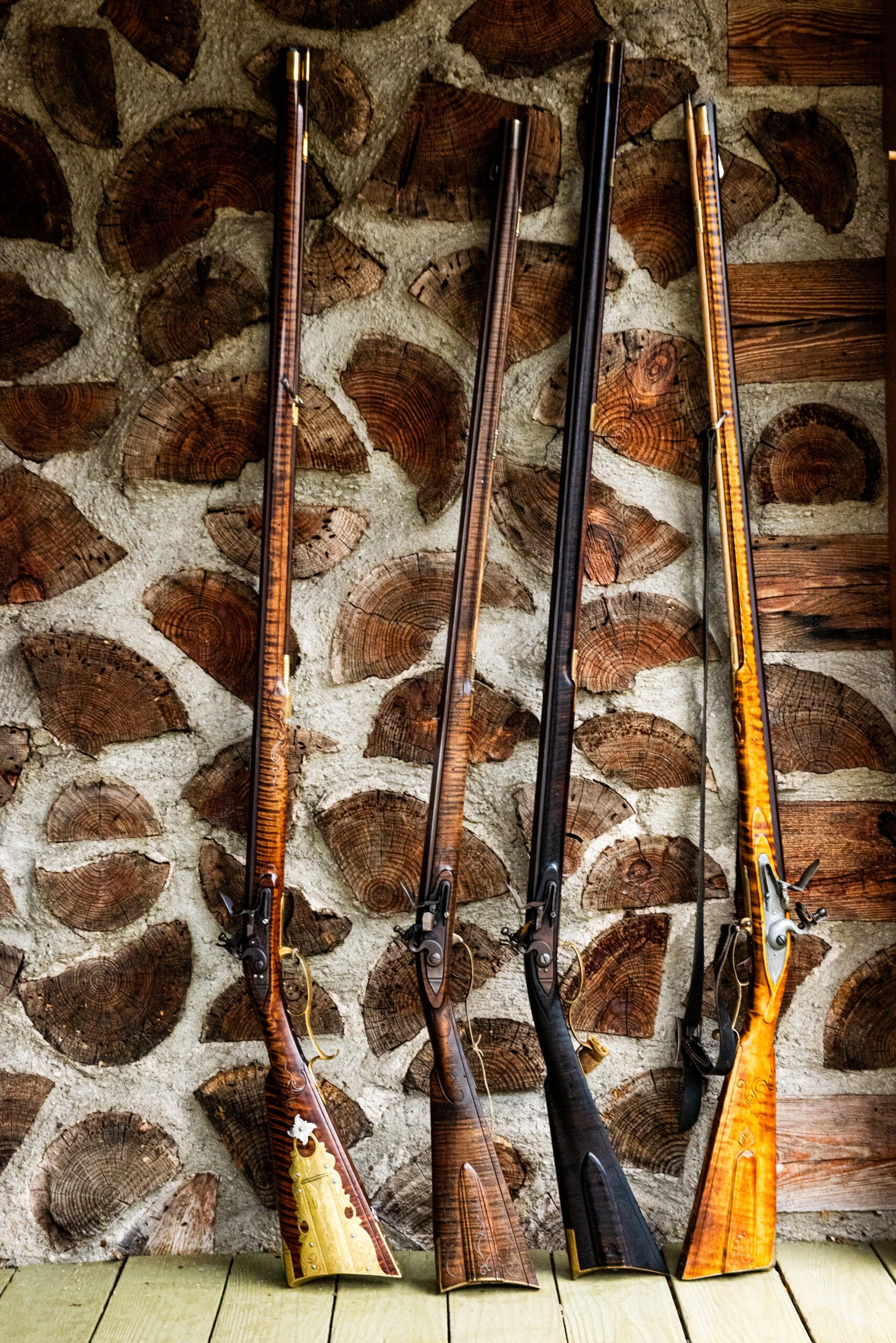
Four of the traditional flintlock rifles used by hunters during our trip. Just don’t call them Kentucky rifles. One thing Ehrig sets people straight on in short order is that “Kentucky rifle” is a misnomer. He blames the lyrics to “The Battle of New Orleans,” which include the lines: But Jackson he was wide awake, And was not scar’d at trifles, For well he knew what aim we took, With our Kentucky rifles.
“That’s bull,” Ehrig says. “Basically, what’s known as a ‘Kentucky rifle’ is just a Pennsylvania long rifle in the hands of a guy from Kentucky.” The first makers of American flintlock rifles were German gunsmiths in southeastern Pennsylvania during the early 1700s, he points out. They took the German Jaeger—which had a rifled barrel of about 31 inches—lengthened it, thinned it out, and produced a sleeker, more accurate gun.

Ehrig’s claw necklace and fox hat. His wife made the necklace, using turkey wingbone, glass beads, and silver cups to tie together the claws of a bear Ehrig shot in Quebec. The hat is made from a gray fox that he shot on his farm, the pelt of which he sewed over an existing wool cap.
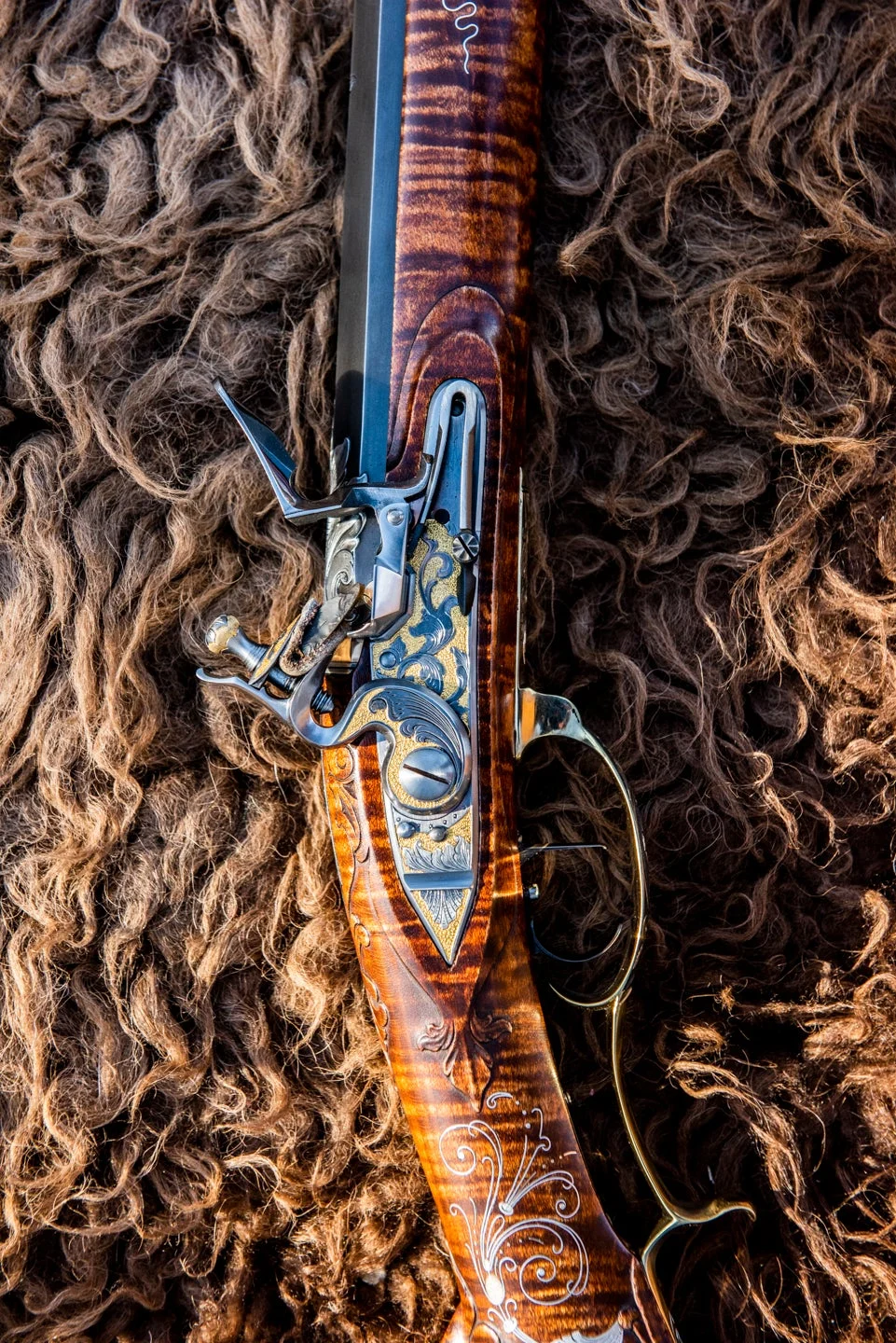
A flintlock rifle made by Slusser with a curly maple stock and finely engraved lock. It took him about a year to complete all the engraving, which he does by hand, using a chisel. “I can do about an inch of engraving in an 18-hour day. That’s just roughing it out, though. It takes a lot longer to do the finished work. I probably make less per hour than a kid working at MacDonald’s,” he says about his trade. “But if God sees fit to give you a talent, I think you’ve got an obligation to use it.”
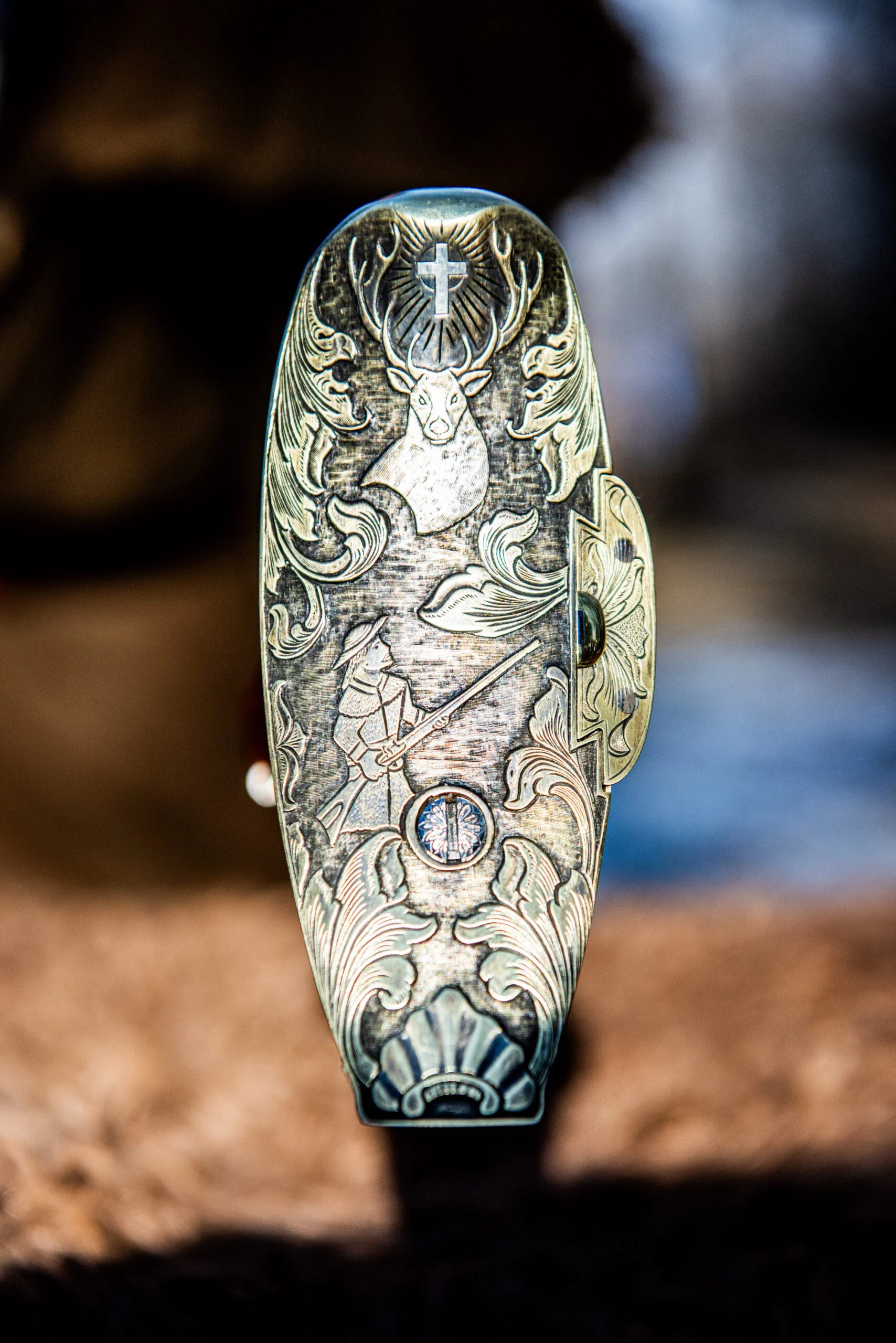
The buttplate of the same rifle. It shows a hunter being watched over by Saint Hubert (symbolized by the cross), an 8th century French nobleman who loved to hunt red stag. One day while hunting, he saw a magnificent stag with a cross between its antlers. According to legend, God instructed Hubert to forsake hunting and all his earthly goods to become a priest. Hubert is known as the patron saint of hunters.
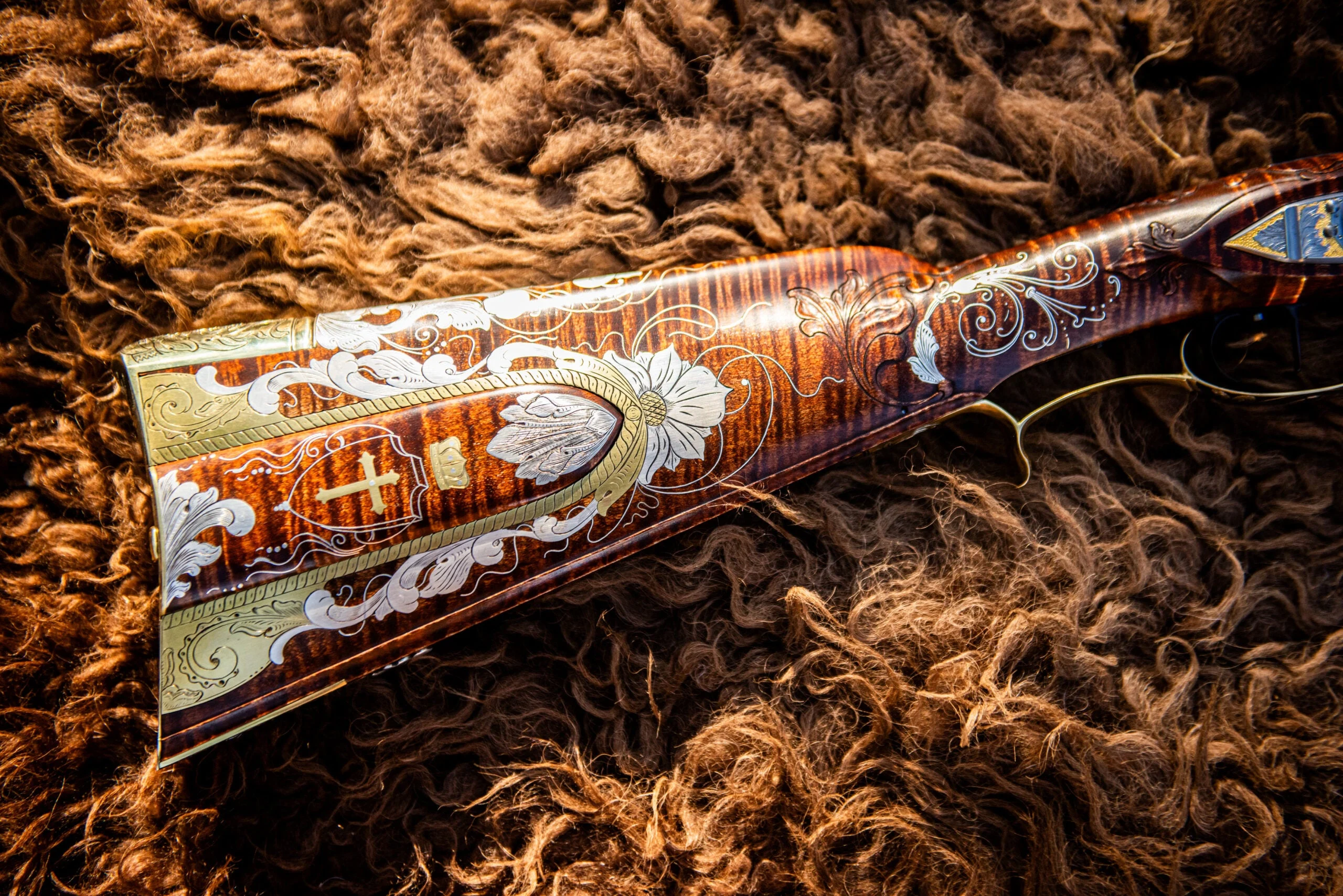
The rifle’s buttstock and patchbox area. Don’t be misled by the fancy work. This flintlock is a shooter that groups under one inch at 100 yards with round balls. Using 325-grain semi-wadcutter bullets that he casts himself, Slusser dropped a whitetail at 230 yards with this rifle.
The wooden dovetail patch box slides open and is decorated with a brass and silver skirt around it. The cross and shield represent faith. “It was my way of paying homage to the One who gave me the skill to do this,” says Slusser. Every gun he makes refers in one way or another to a Bible book or verse. “I’m making one about Revelations right now,” he says. When asked how long it will take to finish, he shrugs as if it’s not really up to him.

It only looks like Slusser is pensively smoking his pipe here. In fact, he’s removing the cap from a small powder horn as he prepares to prime the pan of his rifle. Priming powder is of a much finer grade that the gunpowder used to power the ball. “It’s like the kindling you use to start a bigger fire,” he says.
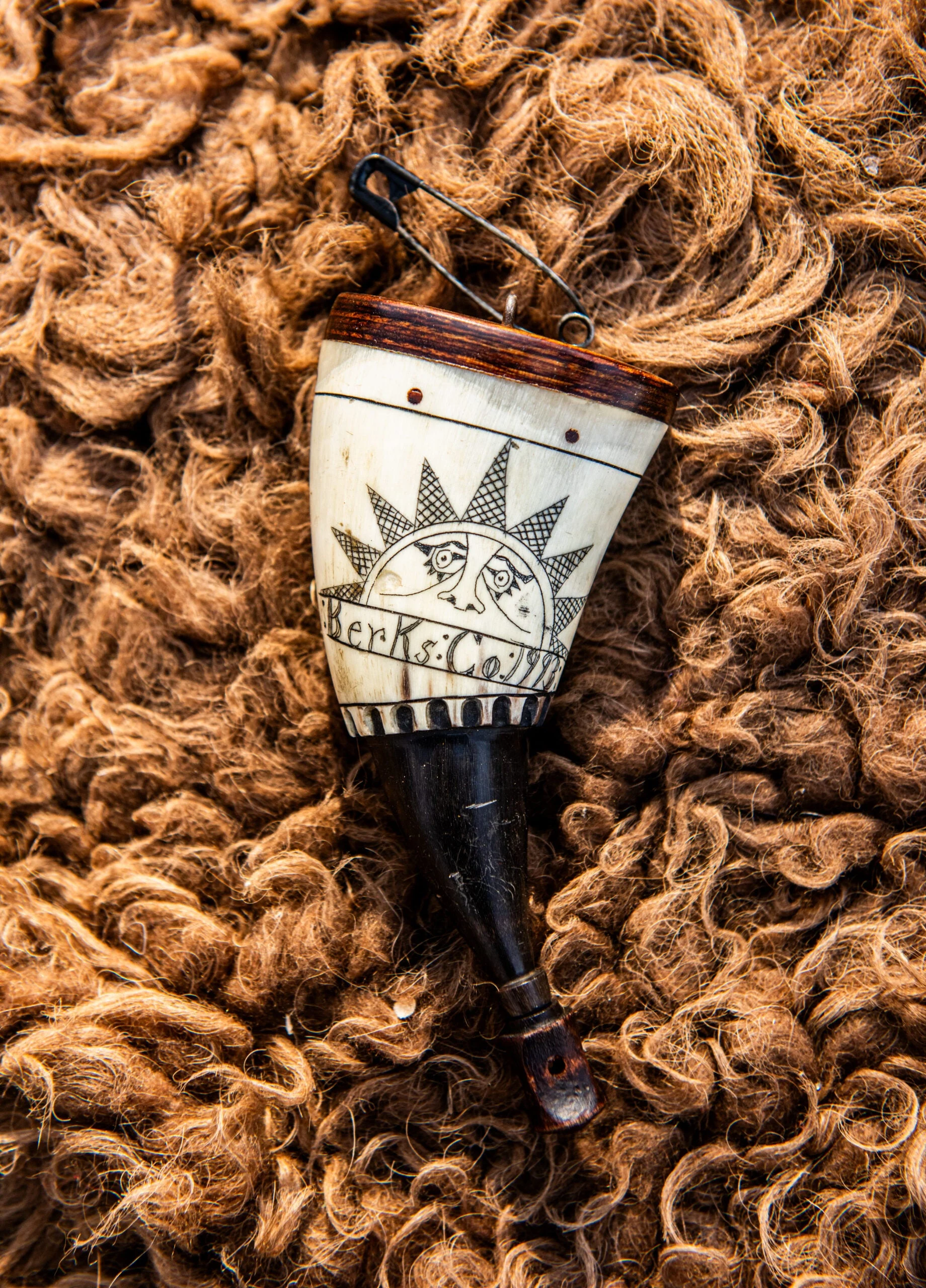
One of Ehrig’s priming horns. It was made in 1993 by his late friend, Skip Hamaker, a big man known as “The Buckskin Buddha.” The safety pin used to attach it to clothing gives an idea of its size. If you’re wondering if the safety pin is historically inaccurate, it is. It was invented in 1849.

Another priming powder horn made by Skip Hamaker in 1987. These waterproof containers were typically made from cow horn.
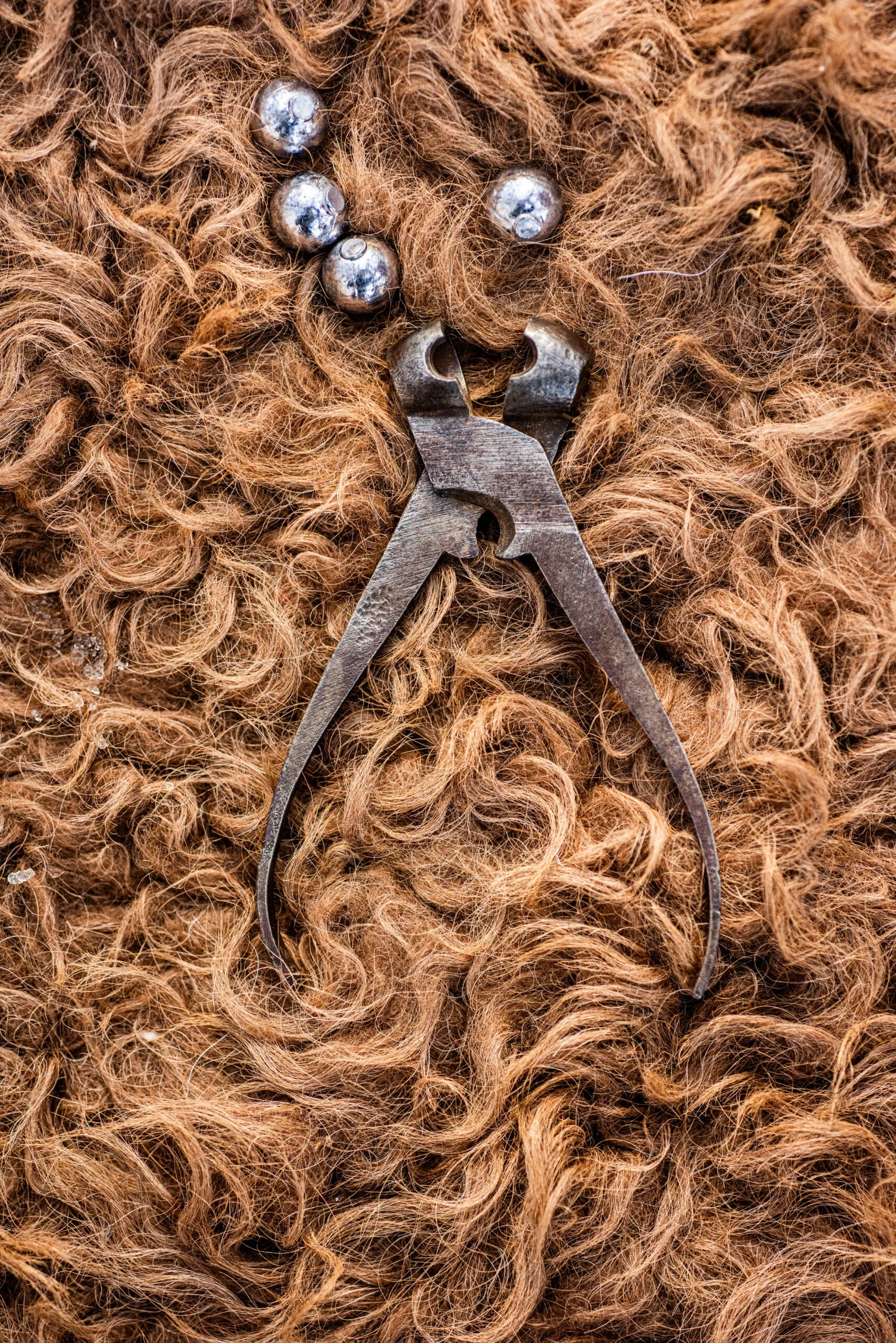
A roundball mold that a longhunter might carry into the field, along with balls ready to fire. In Colonial times, shooting contest participants often fired at an “X” marked on a stump. The winner took possession of the stump, which was a valuable prize, as it might have a hundred or more lead balls in it. The lead was melted down and recast as new ammunition.

Left: Ehrig’s “pipe” tomahawk, sometimes referred to as a “belt ax,” is designed so that it can also be used as a throwing weapon. There is a bowl built into the head of the tomahawk, into which the handle can be fitted as a pipestem. A pipe was a necessary item to have on the frontier for trading with native Americans. Left: Ehrig’s elk-leather shooting bag for the accouterments necessary to load and shoot a flintlock.
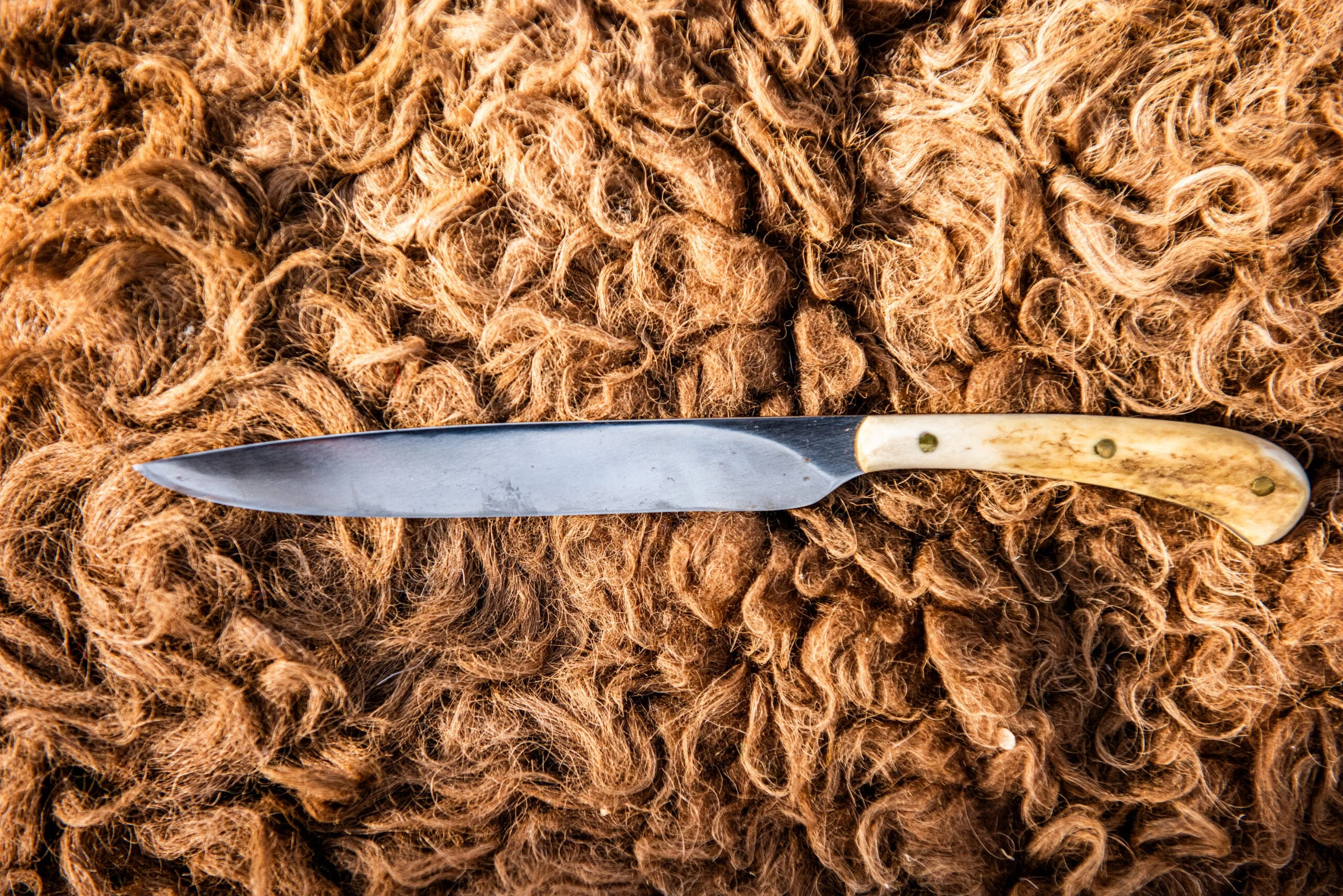
A longhunter’s small belt knife with a deer-antler handle made by Slusser. “Men at the time essentially carried simple butcher knives,” he says. Slusser downplays his knife-building skills, but Ehrig says his knives are so sharp that he’s almost afraid to use them.
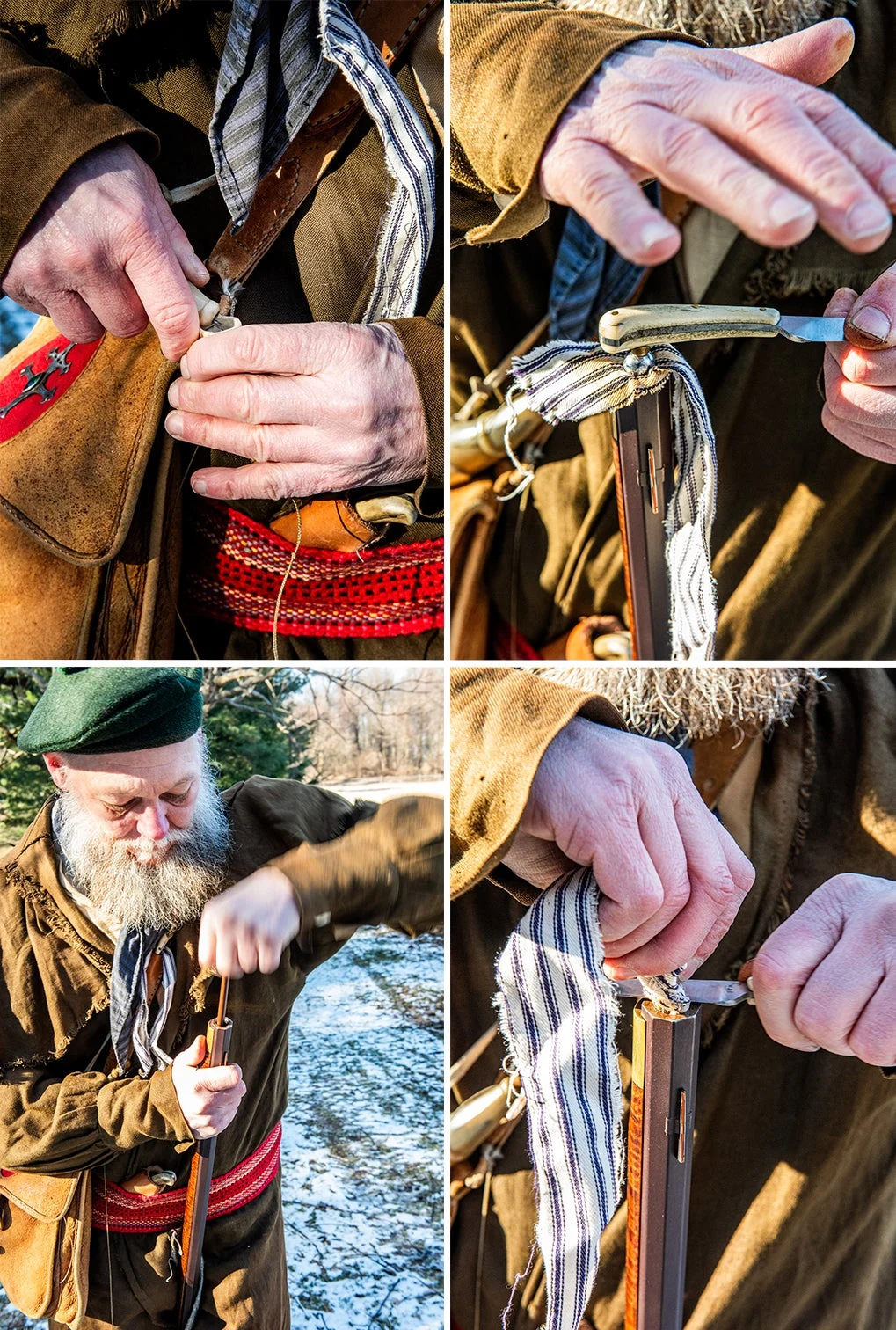
Slusser demonstrates the loading process. Clockwise from top left: Measuring the main charge; loading the patch and ball, using the handle of a knife in lieu of a short starter; cutting off the excess patch; and running the ball and patch down the barrel.
Every step of this process and every component used affects accuracy, says Ehrig, “right down to the thickness of the patch you stuff down the barrel. The grade of the powder makes a difference. The size of the round ball as it relates to the diameter of the barrel makes a difference. It’s the most challenging firearm there is.”

